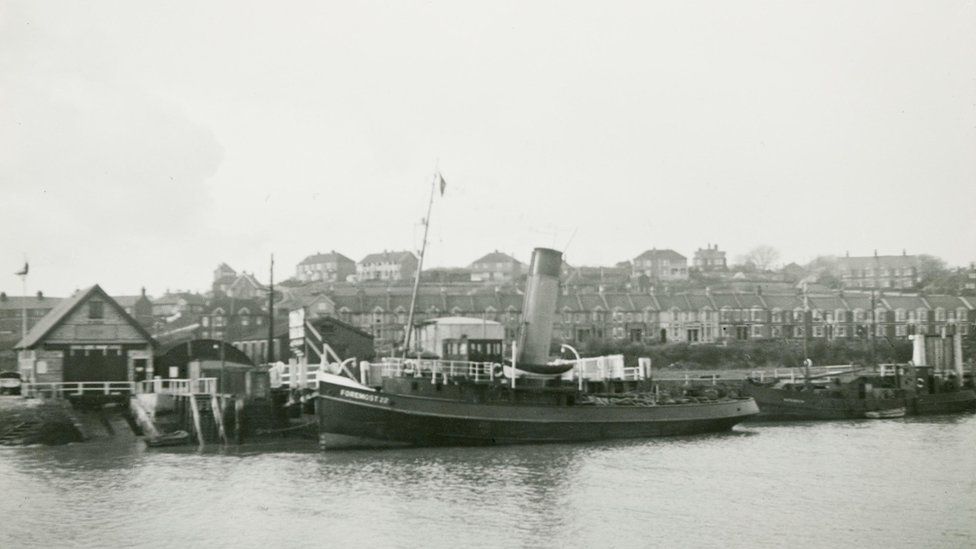
The tug ‘Foremost 22’ took part in the evacuation, helping tow the damaged HMS Sharpshooter from Dunkirk to Dover
Researchers have launched a mission to find wrecks of ships lost during the evacuation of Allied troops from Dunkirk during World War Two.
More than 305 vessels were sunk during Operation Dynamo – in which 338,226 surrounded troops were evacuated from Dunkirk between 27 May and 4 June 1940.
Some 1,000 ships, including pleasure craft and fishing vessels, took part in the rescue – a key moment of the war.
The project will search for 31 wrecks believed to be in French waters.
It is a partnership between France’s marine heritage agency Department of Underwater Archaeological Research and Historic England and builds on research by Claire Destanque, of Aix-Marseille University, which revealed new information about the location and condition of the wrecks.
Divers from Dunkirk and the surrounding area have already located 37 shipwrecks in the area and the new project will use high-tech survey equipment to document the sites that are already known.
Image source, PA News
British soldiers are assisted by the Royal Navy on their return to England after being evacuated from the beaches of Dunkirk
Dr Antony Firth, Historic England’s head of marine heritage strategy, says some of the vessels would have been heavily loaded with troops, and would have sunk “within minutes” with very heavy loss of life.
“Undoubtedly a lot of people were wrapped up in Dunkirk. Most of them survived, got back to the UK and carried on their seafaring histories, and that’s obviously very good.
“For some people, their family stories had a catastrophic element at Dunkirk, and that, I know for certain, still resonates with people today.”
By using sound technology, Dr Firth believes the shipwreck surveys will be able to build a detailed picture of the condition of the wrecks, and what happened to them – such as if they were hit by a torpedo or a mine.
The evacuation saw vessels being attacked from land, sea and air as well as colliding with each other.
The initial results of the study will be shared with the public at an event in October.
Image source, Warner Bros
Singer Harry Styles starred in Christopher Nolan’s Oscar-winning film Dunkirk, based on the events of Operation Dynamo
‘A miracle of deliverance’
Operation Dynamo marked a significant moment in the course of World War Two, as the Allies averted near disaster after much of their combined forces were surrounded by German troops.
Winston Churchill, who had been British prime minister for just 16 days when the evacuation began, called it a “miracle of deliverance” in his famed “We Shall Fight on the Beaches” speech in 1940, although he considered a defeat a “colossal military disaster”.
During the nine-day evacuation, military, transport, fishing and service vessels, as well as pleasure craft, were used to carry soldiers, with ships flying British, French, Belgian, Dutch, Polish, Danish, Norwegian and Swedish flags.
A handful of civilians also took part, sailing out into the Channel voluntarily, while many privately own vessels – known as the Little Ships – were requisitioned by the military.
The dramatic events have been recreated on screen over the years including in Christopher Nolan’s Oscar-winning film Dunkirk.








